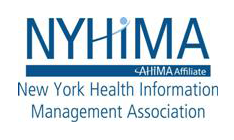AHIMA Health Informatics and Information Management (HIIM) DomainsReview the AHIMA Recertification Guide here (revised Spring 2021) Click below to review the HIIM Professional DomainsData Structure, Content, and Information Governance | Information Protection: Access, Disclosure, Archival, Privacy and Security | Informatics, Analytics, and Data Use | Revenue Cycle Management | Health Law and Compliance | Organizational Management and Leadership | Clinical Foundations | Evolving Topics/Other HIIM Relevant Topics Domain I. Data Structure, Content, and Information GovernanceData content, structure and standards helps create the framework for an optimal health record and effective information exchange between healthcare providers. This is achieved by establishing clear guidelines for the acceptable values, data sources, and how information is technically captured, processed, accessed, archived / stored, and retrieved for specified data fields. It focuses on information systems, informatics principles, and information technology as it is applied to the continuum of healthcare delivery. Examples: Domain II. Information Protection: Access, Disclosure, Archival, Privacy and SecurityEstablish, evaluate, and maintain policies and protocols for protecting healthcare information to govern systems and processes that generate, collect, store, transmit, use, archive, and disposition of data and information. Examples:
c. Security and privacy risk assessment, analysis, mitigation and management Domain III. Informatics, Analytics, and Data UseDefines how health information is manipulated and utilized by the organization and shared to external entities, including but not limited to: budgeting projections, long-term service line planning, forecasting healthcare needs of an organization’s patient population, resources used, etc. Data analysis is the process of transforming data into information for decision making. Examples: Domain IV. Revenue Cycle ManagementManagement and oversight of all business, administrative and clinical functions that contribute to patient revenue from point of entry through payment and adjudication. This may include insurance processing, registration, eligibility, claims management, billing, collections, and denials. Examples: Domain V. Health Law and ComplianceThe process of establishing an organizational structure that promotes the prevention, detection, and resolution of instances of conduct that do not conform to federal, state, or private payer healthcare program requirements or the healthcare organization’s ethical and business policies. Examples: Domain VI. Organizational Management and LeadershipUtilizing skills and tools to manage, guide, improve operations, provide innovative solutions based on health data, proactively offer knowledge and decision support expertise, and support patient safety and quality initiatives which ultimately lead to greater trust and transparency within organizations and healthcare in general. Examples: Domain VII. Clinical FoundationsUnderstand human anatomy and physiology; the nature of disease processes; and the protocols of diagnosis and treatment of major diseases, to include common drugs and laboratory and other tests used for the diagnosis and treatment of disease. Practice the ability to apply this knowledge to the reading, coding, and abstracting of medical information to support quality patient care and associated databases. Examples: Domain VIII: Evolving Topics/Other HIIM Relevant TopicsEmerging topics that arise as part of the healthcare ecosystem as it transitions to keep pace with new regulations, technologies, and other changes in the industry. Examples: |
